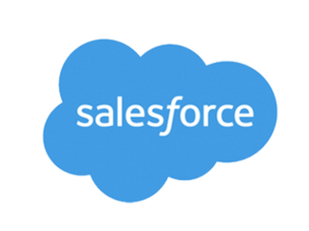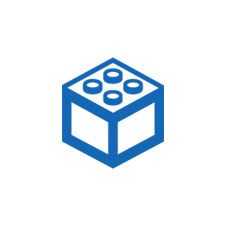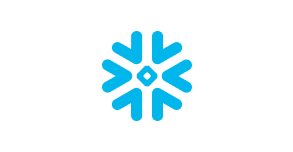The $30B transcription industry leader enabled an acquisition growth strategy with scalable data operations while reducing data team costs

Our BI isn’t classic – it’s a mission-critical system as we create essential outputs for billing and other operational processes. Reliability, accuracy, and timeliness are absolutely crucial. – Ilanit Rapaport, Director of BI & Analysis, Verbit.ai
Key results
- Verbit-acquired subsidiaries’ data is ingested into a unified data model allowing them to analyze and process data at the subsidiary level and across the entire organization
- Billing and transactional processes are automated to speed up business operations and prevent human errors
- Major savings on data engineering: The data team is now fully in-house, eliminating prior dependencies on external data consultants for ongoing maintenance while maintaining the original team size
- With the help of a data analytics consultancy, the data team migrated from an on-premises rigid system to a modern, flexible data platform that is quickly adjusted to new business needs
At Verbit, cracking the balance between combining AI and humans for greater outcomes has been the recipe for their technological success early on. That was one of many success factors for the Series E startup founded in 2017, which raised $360M to date. This growth resulted in Verbit’s current position as one of the leaders of the professional transcription and captioning market. Alongside Verbit’s organic hyper-growth, another major success factor was the inorganic growth, led by a Mergers and Acquisitions strategy. To date, Verbit has executed 5 different acquisitions, of UK and US based transcription companies in the fragmented $30 billion transcription industry.
Managing different subsidiaries’ data at scale
While each of these acquisitions enabled Verbit to specialize further within a certain industry or extend its services, it also created increased pressure on Verbit’s BI team, trying to manage data across different subsidiaries with different systems and formats. Some of the acquired subsidiaries had their own databases and BI systems, others had nothing in place. The result was multiple tables with similar content but different structures, creating maintenance overhead and integration difficulties to see an overall performance view.
Adding to that pressure was the role of the BI team which isn’t just responsible for traditional reporting and analytical insights, but also for delivering data to process billing and other business operations. Needless to say, this data delivery must be reliable. With a legacy warehouse built on SQL Server and SSIS, growing complexity, and a dependency on an external provider to maintain the warehouse, Ilanit Rapaport, Director of BI & Analysis knew she had to make a change. Bringing years of experience in managing data teams and projects, Ilanit knew this change wasn’t an easy one.
Building a new platform from scratch can be easy but a migration project of a working BI system is often much more complex.
Ensuring a successful migration
Part of Ilanit’s desired outcome for the project was to make sure that in the future, her team is capable of responding much faster to new business requirements such as integrating a new subsidiary or even just smaller logic changes. Getting there was much easier with the help of a trusted data consultancy that specializes in setting modern data platforms. After shortlisting Snowflake to serve as the new data warehouse, Ilanit chose to engage with BIyond a leading implementation partner of Snowflake and Rivery to assist with the initial architecture and data model design.
We didn’t want to do a lift and shift migration and so we knew a smart redesign was key to the project’s success. With the right data model in place, the build part becomes much easier.
Ilanit laid out clear guidelines for the modern data platform and worked with BIyond to ensure the proposed architecture supports it.
- Ease of use. “Is it easy to deploy? How easy is it to use? Can we easily understand what was built by others? We didn’t want a tool that requires learning new languages or complex GUI.”
- Data security. “Does it satisfy our CISO data security and privacy requirements? This is important as we work with industries that are extremely data sensitive such as legal and government.”
- Platform and partner agility. “Our needs are always evolving and it’s impossible to plan for everything in advance. We wanted to work with a consulting partner that can adjust to changing requirements. The same was true for the data integration platform that needed to support not only ingesting and transforming data in the warehouse but also cases such as Reverse ETL.”
- Vendor support. “Considering our desire to become independent, we knew vendor support would be critical for us.”
After doing similar projects for other organizations using Rivery and Snowflake, Adar Shomron, BIyond’s CEO recommended Rivery to Verbit as the ELT platform to be used.
“In talking to Ilanit, we quickly realized that Rivery would be a great fit for Verbit’s BI team. The native connectors and the push-down SQL interface for transformations matched the team skill set, reducing the dependency on engineering and infrastructure resources,” said Adar.
To complete the data platform architecture, Verbit decided to keep on using Tableau. Here as well, the decision was to take this migration opportunity to redo and refine most of the analytics delivered in Tableau according to the new data model.
Along with the architecture definition, Verbit and BIyond spent most of their time designing a flexible data model that allows for an overall observation of the entire company and, in particular, of each of the subsidiary companies. The ability to draw insights was made possible by unifying the various activities, employee performance, job analysis, service, and work quality. In this way, it is possible to provide and update each of the subsidiaries on how it functions and to optimize processes for each and at the parent company, which observes all the subsidiaries uniformly. The solution includes an advanced but flexible data model, which enables a reliable business integration between the different systems while supporting a quick addition of future systems to the model without changing the existing set-up.
Working closely with Rivery’s solution engineers on applying our data modeling best practices with Rivery helped us optimize and reduce our costs, said Adar.
Another significant component of the project is loading enriched data from the data warehouse to operational systems such as Netsuite and Salesforce. These Reverse ETL processes orchestrated by Rivery, ensure insights are directly available to business users within the system they operate in daily. In addition, Rivery was also configured to activate data in Tableau. This process consists of a workflow where Tableau’s extracts are refreshed as soon as the data is updated in Snowflake. This ensures the data in Tableau reflects the latest data available in the warehouse while optimizing Tableau’s dashboard performance and minimizing the data warehouse costs by reducing live queries against it.
Outcome
Rivery has made it easy to integrate our data from multiple databases and apps into Snowflake. Now, we can control the entire flow of data and even perform reverse ETL, pushing data from Snowflake right into NetSuite. Ilanit
After a successful design and foundation implementation together with BIyond, the Verbit team continued the rollout of the solution without the need for external consultants or increasing the team size. This was already a win in cost reduction compared to the legacy data system that was maintained by external providers. In addition, the modern data platform enables the team to respond quickly to business requests and significantly shorten development times in implementing required changes.
Rivery’s ease of use for integration and SQL-based transformations, enabled the onboarding of different team members with no data engineering background.
Business requests that require data updates used to take weeks, and now take only a few days, said Ilanit.
The new data platform supports two main models – the first model is a consolidation of all the systems into one central place, with a common language that enables a system-wide analysis of all the information of the subsidiaries. The second model supports a detailed analytical view for each data source and allows you to drill down to the source level and explore the relationships and detailed data points.
In this way, the modern data platform enables a general and broad picture as well as a specific and dedicated view of the various sources while quickly switching between the various models.
Verbit’s BI team is now self-sufficient in managing data to support Verbit’s growth and M&A strategy.
Related case studies














